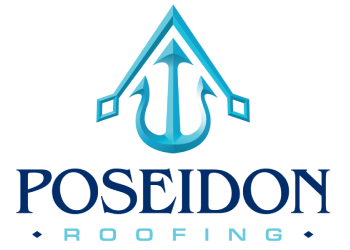Welcome to Poseidon Roofing! As a leading roofing company serving Naples, FL, we understand that choosing the right roofing material for your home is an important decision. The material you select not only affects the aesthetic appeal of your property but also plays a crucial role in providing protection and durability. In this blog post, we will explore different types of roofing materials available in the market, their unique features, and the benefits they offer. Whether you need a residential roofing expert, a local roofing company, or professional roofers in Naples, FL, Poseidon Roofing is here to assist you.
Asphalt Shingles:
Asphalt shingles are one of the most popular roofing materials for residential properties. They are cost-effective, durable, and available in a wide range of colors and styles to suit various architectural designs. These shingles are easy to install and provide excellent protection against weather elements. Additionally, they offer good fire resistance and can last up to 20-30 years with proper maintenance.
Metal Roofing:
Metal roofing has gained popularity in recent years due to its durability and energy-efficient properties. Available in various materials such as steel, aluminum, and copper, metal roofs are lightweight, fire-resistant, and can last for 40-70 years. They reflect solar heat, reducing cooling costs in hot climates. Metal roofs also provide excellent protection against wind, rain, and snow, making them an ideal choice for homeowners seeking long-term performance.
Clay and Concrete Tiles:
Clay and concrete tiles are known for their distinct aesthetics and longevity. These materials offer a classic, timeless look and are highly durable, with a lifespan of 50-100 years. Clay and concrete tiles provide excellent insulation and are resistant to fire, rot, and insect damage. However, they are heavier than other roofing materials, requiring proper structural support during installation. With their exceptional durability, clay and concrete tiles are an investment that adds value to your home.
Slate Roofing:
Slate roofing is renowned for its natural beauty, elegance, and exceptional longevity. Made from natural stone, slate roofs can last over a century when properly installed and maintained. Slate tiles are highly durable, fire-resistant, and offer excellent protection against the elements. They come in various colors and textures, providing a unique and sophisticated look to your home. However, slate roofing requires specialized installation by experienced professionals due to its weight and fragility.
Conclusion:
Choosing the right roofing material is essential to ensure the longevity, durability, and overall aesthetic appeal of your home. At Poseidon Roofing, we understand the importance of selecting the perfect roofing material that suits your needs and budget. Whether you’re looking for a residential roofing expert, a local roofing company, or professional roofers in Naples, FL, we have the expertise and knowledge to guide you through the process.
To learn more about our roofing services or to request a roof repair, visit poseidonroof.com. Our team of skilled professionals is ready to assist you with all your roofing needs. Trust Poseidon Roofing for exceptional craftsmanship, reliable service, and superior quality materials. Contact us today to schedule a consultation and give your home the roof it deserves!

